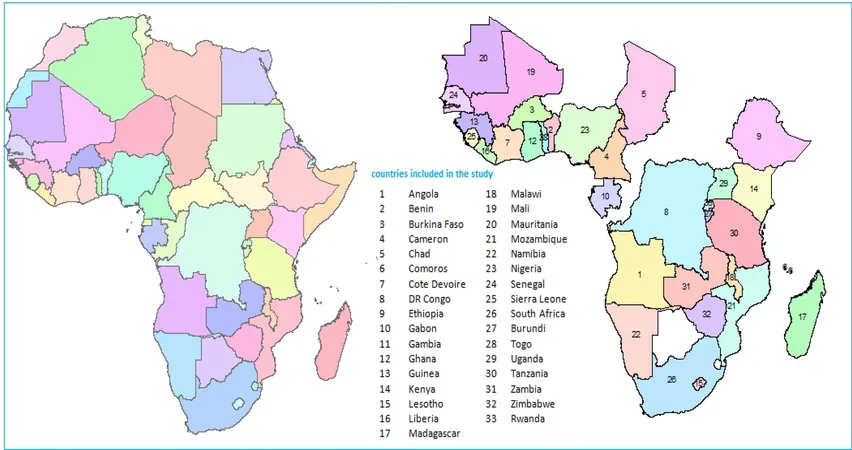
Unveiling the Factors Affecting Antenatal Care Utilization in Sub-Saharan Africa: A Study That Could Save Lives
2024-10-15
Author: Ming
Introduction
Sub-Saharan Africa (SSA) remains a significant focal point for global health concerns, grappling with alarmingly high maternal mortality rates. In fact, women in this region face a death risk during childbirth that is 268 times greater than that of their counterparts in high-income countries. This stark reality emphasizes the crucial importance of adequate antenatal care (ANC) services – essential for the health of both mothers and their babies. A recent study aimed to shed light on the individual and community-level factors influencing the utilization of these services across SSA, yielding insights that could lead to potentially lifesaving interventions.
Study Methodology
Data from the latest Health and Demographic Surveys (DHS) conducted between 2012 and 2022 in 33 SSA countries was analyzed. A total of 240,792 women participated in this comprehensive study. Employing a two-level mixed-effects logistic regression model, researchers identified key determinants impacting the rate of adequate ANC service utilization.
Findings
Results revealed a concerning average of only 55.48% of women receiving adequate ANC services in SSA. Notable positive associations were found linking education level and wealth status to enhanced ANC service uptake. Specifically, women with secondary education or higher were 2.13 times more likely to access adequate ANC compared to those with no formal education. Wealthier women had a 1.26 times higher likelihood of utilizing these essential services. Women aged 35-49, along with those living closer to health facilities, also exhibited higher utilization rates.
Conversely, obstacles were evident. Rural women, those lacking mass media exposure, and those with higher birth orders displayed significantly lower utilization rates of ANC services. Understanding these barriers is vital, as the study indicated that both individual and community factors accounted for 62.60% of the variation in ANC use.
Wider Implications
The findings should serve as a clarion call for policymakers and public health officials. A targeted approach focusing on enhancing the ANC service utilization among rural, poor, and uneducated women could dramatically improve maternal health outcomes. Additionally, interventions addressing community-level influences—such as access to health facilities and media exposure—are essential for enhancing ANC service uptake.
Global Context
Despite concerted global efforts, nearly 800 women continue to die each day from preventable complications related to pregnancy and childbirth. In the context of the Sustainable Development Goals (SDGs), particularly the third goal aimed at significantly reducing maternal mortality by 2030, the need for improved antenatal care services becomes even more pressing.
Conclusion
As the study illustrates, the pathway to reducing maternal mortality in sub-Saharan Africa is paved with an understanding of socio-economic disparities, education levels, and community engagement in health care. By prioritizing factors influencing ANC service utilization, stakeholders can make informed decisions that save lives, not just statistics. The future health landscape of SSA depends on an urgent demand for change—a change that can be implemented today, by empowering women through education and access to health services.
The insights from this study could unravel a critical path towards saving thousands of lives, transforming maternal health, and ensuring a safer future for women in sub-Saharan Africa. Are you ready to advocate for change? Let's make our voices heard!


 Brasil (PT)
Brasil (PT)
 Canada (EN)
Canada (EN)
 Chile (ES)
Chile (ES)
 España (ES)
España (ES)
 France (FR)
France (FR)
 Hong Kong (EN)
Hong Kong (EN)
 Italia (IT)
Italia (IT)
 日本 (JA)
日本 (JA)
 Magyarország (HU)
Magyarország (HU)
 Norge (NO)
Norge (NO)
 Polska (PL)
Polska (PL)
 Schweiz (DE)
Schweiz (DE)
 Singapore (EN)
Singapore (EN)
 Sverige (SV)
Sverige (SV)
 Suomi (FI)
Suomi (FI)
 Türkiye (TR)
Türkiye (TR)